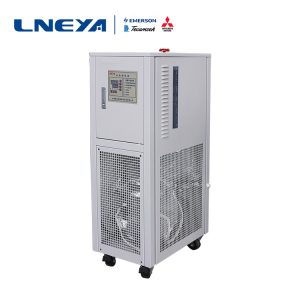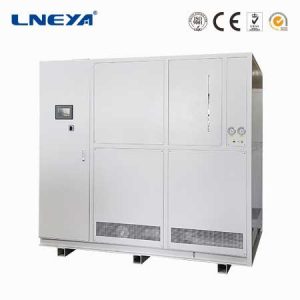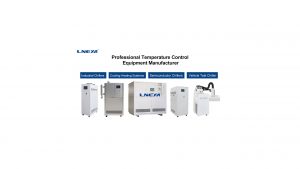Measures for stable operation of short-range molecular distiller
If the short-range molecular distiller is inefficient during operation, it will affect the use of the associated refrigeration heating temperature control system. How does the short-range molecular distiller maintain stable operation?
If the steam pressure entering the first effect film evaporator is too low, the preheating section of the liquid entering the tube will increase, which correspondingly shortens the film evaporation distance of the annular flow section, which will result in insufficient heat transfer and decrease in productivity. Or the discharge concentration does not meet the requirements. Therefore, within a certain range, appropriately increasing the pressure of the heating steam increases the temperature difference between the steam and the material, that is, the amount of heat transfer increases, and increases the evaporation rate. However, the vapor pressure should not be too high, otherwise the “dry wall area” of the heating pipe will reduce the heat transfer coefficient value, and the discharge concentration will be too high, which will easily cause the discharge pipe to clog and affect normal production.
The higher the vacuum of the short-range molecular distiller evaporating evaporator, the lower the boiling point of the liquid, and the higher the average temperature difference between the hot and cold fluids, the better the heat transfer effect. At the same time, under vacuum, the superheat temperature of the bubble generated at the lower inlet exceeds the temperature difference from the heat transfer in the film, so evaporation can be carried out completely on the surface of the film.
The short-flow molecular distiller is introduced into the rising film evaporator and the raw steam enters the first effect tube bundle and is discharged from the lower portion of the evaporator. In actual operation, the raw steam cannot be fully utilized, and a large amount of hot steam is discharged out of the evaporator together with the condensed water. The waste heat from the steam passing through the shell is used as a heat source, and a preheater is added before the feed liquid enters the effect-lift membrane evaporator to preheat the liquid to a higher temperature, so that not only the heat source can be fully utilized, but also waste is avoided. It can reduce the evaporator load and shorten the evaporation time, which is beneficial to the improvement of the evaporator production capacity.
The short-range molecular distiller should pay attention to maintaining its stable and efficient operation mode in actual operation, so that it is more stable and efficient in operation with the refrigeration heating temperature control system of LNEYA.
(This article is from the source network, if there is any infringement, please contact to delete.)
Recommandations connexes
-
Heat transfer oil circulation system refrigeration deterioration problem
1332I believe that many users have encountered the heat transfer oil circulation system after a long time of use, will feel the deterioration of the scene, LNEYA as a professional manufacturer to remind everyone, if you encounter these phenomena, user...
Voir les détails -
How to replace the four-way valve of industrial refrigeration equipment?
900The four-way valve of industrial refrigeration equipment needs to be replaced in time after a long period of use, so how to replace it? When replacing industrial refrigeration equipment, you need to first remove the connecting pipe connecting the ...
Voir les détails -
Effet sur la réfrigération d'un évaporateur en série à température constante à semi-conducteur de haute précision
896The high-precision semiconductor constant temperature series of different models of the equipment, the choice of evaporation is also different, then, what effect does the heat exchanger have on the high-precision semiconductor constant temperature...
Voir les détails -
Why is it dangerous to use an enamel reactor?
1252The enamel layer of the enamel reaction kettle is easy to burst when it is cold and hot. Because the enamel layer is sintered on the surface of the enamel reaction kettle, and the enamel layer will melt when it exceeds 200 degrees Celsius, so the...
Voir les détails
 LNEYA Industrial Chillers Fabricant Fournisseur
LNEYA Industrial Chillers Fabricant Fournisseur














